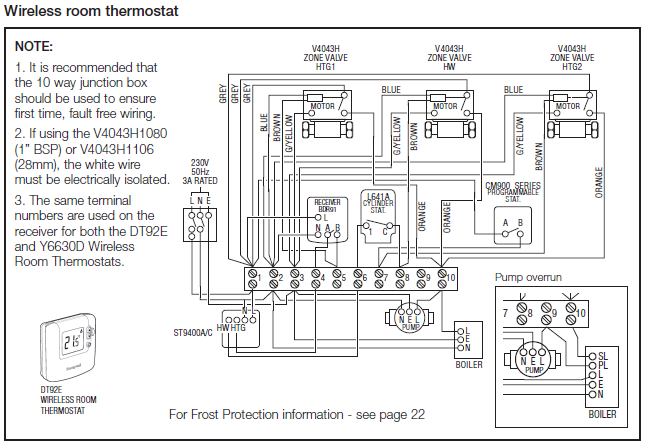Latch vs Flip-Flop
Difference between a flip-flop and a latch is in the method used for changing their state. Flip-flops are synchronous bistable devices, while latches consider as asynchronous bistabile devices. Digital Electronics: Difference between latch and flip flopContribute: https. The designing of latches is very flexible when we compare with FFs (flip-flops) The latches utilize less power. The performance of latch in the design of the high-speed circuit is quick because these are asynchronous within the design and there is no need of CLK signal. The shape of the latch is very small and occupies less area. When this is the case the behavior of a latch and a flip-flop are EQUIVALENT, because it does not matter whether it catches the input value on a signal edge (flip-flop) or while input latching is enabled (latch) as the input does not change. So the synthesis tool chooses the. I have played this game more than a year, but i still don't know what does SR latch and JK flip flop do, Can someone explain to me what they are, how can i use it and what can i build with it. Last edited by yungmono; May 12, 2019 @ 12:41am Showing 1-3 of 3 comments. Arc May 12, 2019 @ 1:08am.
Latch and flip flops are basic building blocks of sequential logic circuits, hence the memory. A sequential logic circuit is a type of digital circuit which responds not only to the present inputs, but to the present state (or past) of the circuit. In order to achieve this functionality, the circuit must be able to retain its state as binary information.
More about Latches
The basic property of a memory device is that, it should be able to retain its outputs at a fixed state until it is instructed to change. This function is provided by a bistable logic circuit. Simply put, it has two stable states; a Set state and a Reset state. By convention, the set state is considered as 1 and reset state is considered as 0. Such a circuit element is known as a latch; analogous to a mechanical device latching the objects to a fixed position.
Basic Set-Reset latch (SR latch) is the simplest form of bistable circuits. JK and D latches are two other types of latches. Their operation is conveniently expressed by a truth table. It is a tabular representation of all the possible outcomes for different input states.
A basic latch changes its value whenever correct inputs are given. This poses problems for controlling the data bit stored in the latch in a large circuit. More control to bistable circuit can be introduced by passing each input through an AND gate. By controlling the AND gate using another signal, inputs can be allowed at desirable events. This additional input is known as the Enable, and a latch configured in this manner is known as a clocked latch or a gated latch. Usually the Enable is controlled by a clock, which is a digital signal with desirable intervals of high (1) and low (0) states.
For a clocked D-latch, whenever the clock is in the high state, the output assumes the high state for every high state of the inputs. This behaviour is called transparency. In some applications, transparency of the latches is a disadvantage.
More about Flip-Flops
It is often necessary to have the capability to sample the input at a specific instant and retain the value internally. Because of the transparency, the latch responds to any event occurring in the high state of the clock. As a solution, bistable circuits triggered on the rising edge or the falling edge of the clock pulse can be used. These circuits are known as flip-flops, which are synchronous with the edge of a clock pulse. Therefore, Flip-Flops are also known as synchronous bistable multivibrator circuits. On the other hand, latches are asynchronous bistable multivibrator circuits.
Corresponding to operation of the latches, SR, JK, D, and T flips flops are also designed.
What is the difference between Latches and Flip Flops?
• The latch is an asynchronous bistable multivibrator circuit, and a flip-flop is a synchronous bistable multivibrator circuit.

• In latches, the retained state can change at any instant when the enable is at the high state, but in flip flops, the retained state can change only at the rising edge or the falling edge of the clock signal given as the input of the enable.
Related posts:
latch vs flip flop-Difference between latch and flip flop
This page compares latch vs flip flop and mentions difference between latch and flip flop.It mentions examples of SR latch with enable and SR flip flop in order to provide comparison between latch and flip flop.
SR Latch

Latch Vs Flip Flop
Fig-1: SR Latch with EnableThe figure-1 depicts SR latch with enable using NAND Gates.
➨When E = 1, the circuit behaves like the normal NAND implementation of the SR latch except that the S and R inputs are activehigh rather than low.
➨When E = 0, the latch remains in its previous state regardless of the S and R inputs.
In actual circuits, the enable input can either be active high or low, and may be named ENABLE, CLK, or CONTROL.A typical operation of the latch is shown in the timing diagram.
➨Between t0 and t1, E = 0 so changing the S and R inputs do not affect the output.
➨Between t1 and t2, E = 1 and hence changing the S/R will affect the output accordingly.
SR Flip flop
Fig-2: SR Flipflop
We have seen in figure-1 that, output changes when enable signal is high andhence it is known as level triggered.When the Enable pin in figure-1 is replaced with clock input thenthe circuit acts as flip flop which is shown in the figure-2.The circuit in figure-2 is called flip flop only when clockgoes from low to high or high to low.This is because circuit is operational during this edgetransitions.
Master and Slave SR Flip flop
Fig-3: Master slave SR Flipflop

Both latches and flipflops are useful in setting and resetting the data bit.But unlike latches, flip flops will change the content at the active edge ofclock signal only.When both the inputs are asserted simultaneously , like their latch (i.e. SR) counterpart,flip flop (i.e. SR) can enter into undefined state.
Tabular difference between latch and flip flop
Following table mentions similarities and difference between latch and flip flop.
| Latch | Flip flop |
|---|---|
| It is bistable device which stores either 0 or 1. | It is also bistable device which stores either 0 or 1. |
| Flip flop changes state only during the clock signal. | Latch changes state as soon as input is given and does not depend on control input or clock inputi.e. there is no clock present in latch. |
| In flip flop, there is control over operation using clock signal. | In latch, there is no control over operation unless we desire to have with the help of enable signal. |
| Based on edge triggering (low to high transition or high to low transition) there are two types of flipflops viz.positive edge triggered and negative edge triggered. There is also type of flip flop which triggers based on pulse middle part known aspulse triggered flip flop. | The latch which gets activated based on enable signal (in logic high state) and remains indeactivated state when enable signal is low; is known as gated latch. |
| Examples of flip flops are D flip flop, T flip flop, SR flip flop, JK flip flop | Examples of latches are D latch, T latch, SR latch, JK latch |
Latch Vs Edge Triggered Flip Flop
Flip flop VHDL Verilog source codes
D Flipflop with synchronous reset verilog code
D Flipflop without reset verilog code
Flip flop conversion equations
D Flipflop
T Flipflop
JK Flipflop
What is Difference between
difference between FDM and OFDM
Difference between SC-FDMA and OFDM
Difference between SISO and MIMO
Difference between TDD and FDD
Difference between 802.11 standards viz.11-a,11-b,11-g and 11-n
OFDM vs OFDMA
CDMA vs GSM
RF and Wireless Terminologies

Share this page

Translate this page
